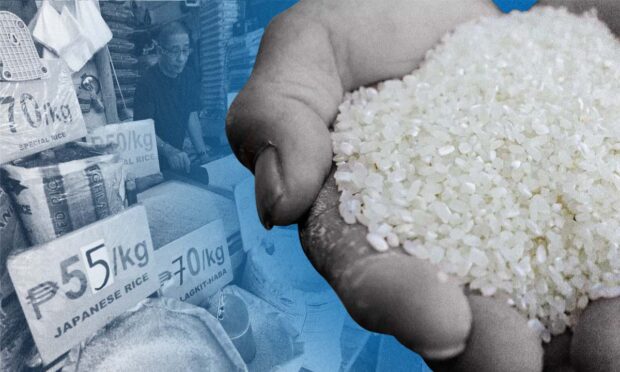Rice prices surge as production costs rise
Despite having enough rice supply, retail prices of the country’s staple food in Metro Manila have jacked up by about P2 per kilogram as farmers face increased production costs.
In an interview, Agriculture Assistant Secretary Kristine Evangelista said the buying price of “palay” (unhusked rice) has reached P20 per kg while in other areas, it has surged to P23 per kg.
“The price of some agricultural inputs has increased, so that will definitely affect their production cost,” said Evangelista.
“What we’re trying to do now is also introduce other agricultural inputs to help our farmers to bring down their production cost,” she added.
In the Philippines, the rule of thumb is that the commercial price of rice is double the farm-gate price.
Article continues after this advertisementThe farm-gate price of palay refers to the selling price between farmers and traders, with the pricing largely dictated by farmers.
Article continues after this advertisementAs of Friday, locally produced rice is sold from P34 to P60 per kg, compared to P38 to P50 per kg a year ago, based on the Department of Agriculture’s (DA’s) price monitoring.
Imported rice is priced from P40 to P55 per kg, previously P37 to P50 per kg. Imported regular milled rice is not available in the markets.
READ: A year into Bongbong Marcos’ rule: P20/kg rice becomes a conundrum
While certain farmers managed to sell palay at higher prices, Evangelista said others were able to sell their produce at lower prices.
“We have talked to farmers in Nueva Ecija and Tarlac and they said because of using a different type of fertilizer, they have reduced their price of palay. Now, they are our partners in selling rice in Kadiwa outlets for P25 without any subsidy,” she said.
“However, we see the need to monitor them because if our farmers are able to sell their palay for P12 without incurring a loss even if they are using other types of fertilizer, the retailers should feel that (lower selling prices),” she added.
The Philippines, Evangelista said, is assured of sufficient supply of rice as it has 64 days’ worth of buffer stock, enough to meet this month’s demand pegged at 7 million metric tons.
The DA earlier said the domestic stockpile should be 37,000 MT a day or 3.33 million MT good for three months.
Data from the Philippine Statistics Authority showed that palay production reached 5.02 million MT in the first quarter of 2023, up by 2.6 percent from 4.90 million MT in the same period a year ago.
Rice imports that entered the country hit 1.73 million MT, according to the Bureau of Plant Industry’s data as of June 15. Vietnam accounted for 1.55 million MT of imported rice, representing a share of almost 90 percent. INQ
